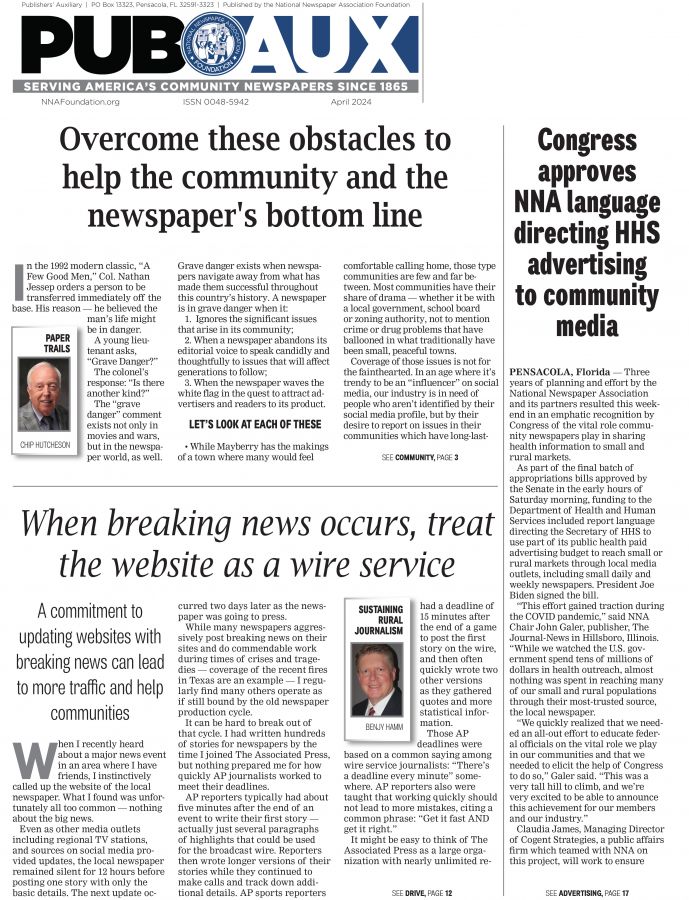USPS files for ‘exigent’ hike of 5.9%; Periodicals higher, Standard lower
Nov 4, 2013
1.6% inflation plus
4.3% ‘exigency’
By Max Heath
Postal Tips
The U.S. Postal Service filed its 2014 price increase case Sept. 26, and for the second time since 2006 legislation mandating only inflationary increases, requested an “exigent” increase.
USPS actually filed two cases, one the 1.6 percent inflationary increase as the law allows. The other, separate, exigent case picks up some assumed authority from the first exigent case as decided by the Postal Regulatory Commission. The 4.3 percent represents an amount the PRC attributed to the recession in that case.
The first time was in 2010, and the PRC denied that request. USPS appealed that decision to the U.S. Court of Appeals, District of Columbia Circuit. The court instructed the PRC to compute what percentage of the increase was because of damage from the recession.
USPS never filed to claim that amount until now, as lack of helpful postal legislation and continuing economic difficulties led it to go for it. Thus, the 1.6 percent inflation plus 4.3 percent exigency to reach 5.9 percent.
The fact that the PRC had “blessed” this exigent amount in 2011 makes it appear that it can more easily be accepted this time around. But the National Newspaper Association, in a coalition called the Affordable Mail Alliance, said the case will be attacked on both economic and legal grounds.
There are still legal arguments about what really constitutes an “exigency,” which the postal reform language described as circumstances outside the control of USPS. Legislators had in mind something like another major terrorist attack or other calamity, not a recession. Likewise, arguments can be made on technical grounds about the calculation of both the exigent amount of 4.3 percent and the specific class details in this price filing.
CARRIER-ROUTE PERIODICAL
PROPOSALS MOSTLY MORE THAN 5.9%
Despite the stated average of 5.9 percent, the details by price cell often show different results. Disappointingly for most newspapers, the prices most often paid are higher for lower weights. The 5.9 percent range is most visible at higher weights approaching a pound. (See the chart for details.)
The increase for carrier-route sorted mail entered at the office of delivery is 6 percent or above at 1-12 ounces. It peaks at 7 percent for just 1 ounce, and is reduced with higher weight. A 4-ounce piece would still go for less than 10 cents, at 9.83 cents.
The same, plus more, goes for High-Density mail (125-299 pieces in walk-sequence order) entered at the DDU, peaking at 7.4 percent at 1 ounce and dropping steadily with higher weight. Likewise for Saturation Periodicals, starting at 7.5 percent and declining with greater weight.
It is frankly puzzling why USPS, which has consistently increased the incentives to drop at delivery offices in recent years, has proposed lower percentage increases for non-DDU mail (columns 2 and 4). Even stranger—mail that is neither carrier-route sorted nor DDU entered gets the lowest percentage increases, from 5.2 percent to 5.5 percent.
Carrier-route prices paid by newspapers Outside-County are even harsher in the proposal. Carrier-route sorted mail entered at the DDU would increase by 6.7 percent to 7.3 percent. High-Density walk-sequence copies would increase by 7.5 percent to 9.22 percent. Both ranges are from 16 ounces down to 1 ounce, with lower weight paying higher percentages. All prices are computed at 60 percent advertising.
Saturation walk-sequence (paid when sampling a route) has a bit smaller increase, from 6 percent to 6.3 percent.
A 4-ounce paper sorted to carrier route and entered at DDU would pay 18.8 cents before any bundle charges are added. Mail entered at DDU in unsacked bundles is allowed and avoids any container charge.
CARRIER-ROUTE STANDARD MAIL
PROPOSALS MINIMAL AT 1%-3%
For newspapers that have Standard Mail shoppers, or free newspapers, the news is much, much better. USPS claims to show high profitability on this class and also shelters it for competitive reasons.
Saturation mail entered at the DDU increases only 0.67 percent to 15 cents for weight up to 3.3 ounces. The increases (as shown on nearby chart) are then in the 1 percent range up to 16 ounces, the maximum weight.
High-Density for 125-299 pieces walk-sequenced would increase 2.84 percent to 18.1 cents up to 3.3 ounces. Increases after that range from about 3 percent down to 1.7 percent from 4-16 ounces.
Carrier-Route Basic would get only a 1.76 percent increase to 23.1 cents up to 3.3 ounces, then declining after that to less than 1 percent at 16 ounces. This price has been increased more than the other two in recent years and is not a good value. Newspapers should seek to avoid mailing 10-124 pieces per route unless absolutely necessary. The good news is that would mostly apply to shoppers for high penetration newspapers, not that likely.
NEWSPAPERS EXEMPT
FROM FSS SCHEMES
Newly-introduced is a mandatory scheme sort for “flats” destined for delivery in the territory served by Flats Sequencing System machines, which cover no more than 30 percent of the flats volume nationwide. Newspapers have been exempted from these machines, because they don’t run well on them, and also because moving them from local entry to FSS delays timely delivery.
Rules filed accompanying this price increase make FSS preparation optional for Periodicals flats mailed at In-County price, and also 5,000 pieces or less mailed at Outside-County prices. That exempts most newspapers. USPS likely picked 5,000 pieces because it’s already in the rules for application of the Limited Circulation Discount on page one of the 3541.
EDDM GETS 4.8% Increase
TO 16.8 CENTS
The good news for some newspapers is that the price for Every Door Direct Mail is being increased to 15.5 cents per piece commercial (via BME) from 14.9 cents and 16.8 cents per piece Retail (across front counter) from 16 cents. The percentage increase is 4.8 percent at Retail, which can compete with newspapers for advertising from local merchants. On the other hand, some newspapers sell and print EDDM pieces.
The commercial increase would be 3.8 percent for mail that is more likely to be entered at a big-city Business Mail Acceptance unit at a plant to go to several post offices under an SCF. That price goes to 16.4 cents from 15.8 cents.
One proposed rule change would disallow the use of detached addressed labels with all Standard Mail flats mailed with simplified address. This would affect all EDDM mail, whether entered at Retail or BMEUs. Also, some segment of the free newspaper or shopper business may also use DALs. © Max Heath 2013
Max Heath, NNA postal chair, is a postal consultant for Athlon Media Group (American Profile, Relish, Spry and Athlon Sports magazine) and Landmark Community Newspapers, LLC. E-mail maxheath@lcni.com.







